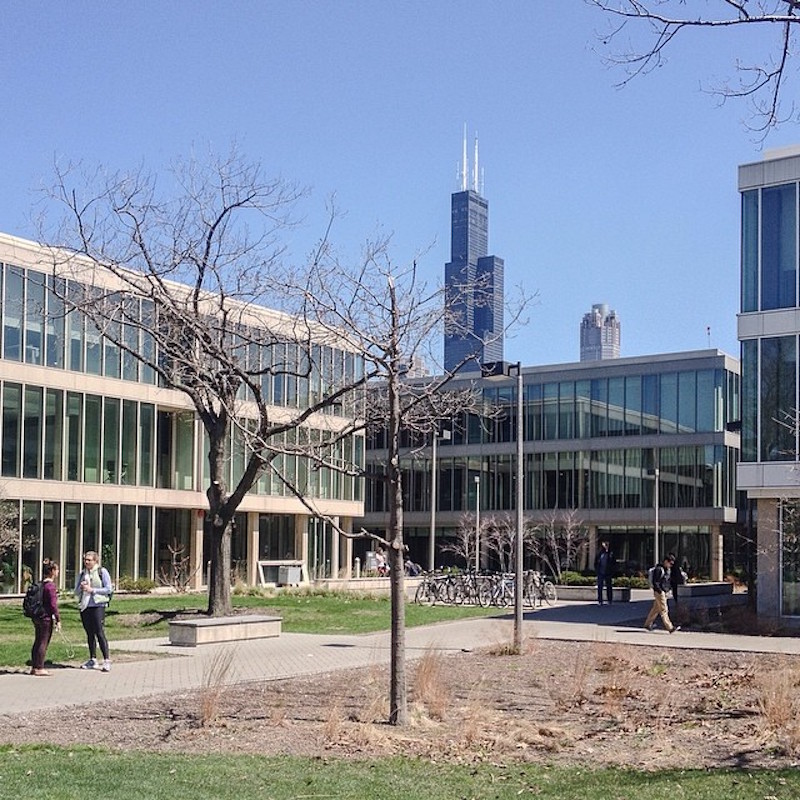To understand the wretched state of financial affairs at many of the nation’s public colleges and universities, one need look no further than The Prairie State.
Illinois is widely considered the worst-run state in the U.S. Crippling pension obligations, $150+ billion in debt and unpaid bills, deeply divided political leadership, the nation’s highest property taxes, all-time-high net out-migration population (105,217 in 2015), and, most alarming, a nearly two-year budget stalemate that has kept public and private businesses and institutions on edge. Sitting on $26 billion of outstanding general obligation bonds, Illinois claims the lowest credit rating among the states—BBB (Fitch Ratings), just two notches above the junk level—and, based on its present course, debt obligations are only going to worsen in the coming years.
The state’s public universities and colleges have been among the hardest hit by the budget impasse, losing (temporarily) as much as a third of their operating budget—all while dealing with flat or declining enrollment numbers. Illinois’ political and fiscal mess has left these institutions—especially the smaller, regional schools that can’t lean on private donors or sizable endowments to get by—gasping for air.
How can public institutions expect to survive and thrive in this turbulent environment? The answer, for one school anyways, is to think and act like entrepreneurs, to bypass the traditional funding and operational models—to escape forward.
Michael Amiridis, Chancellor of the University of Illinois at Chicago—one of just four public universities in the state that has seen enrollment grow in recent years—coined the term when describing the school’s strategies for growth. They include a mix of belt-tightening tactics—including reorganizing internal operations to improve efficiencies and reduce costs—and creative public-private partnerships, not only for capital infrastructure, but also for vital operations areas, like international student recruiting and online degree program delivery.
“We are using private capital to build the necessary infrastructure, whether it is human services, such as a global network of student recruiters, or capital projects, such as a new complex including dormitories and classrooms,” Amiridis wrote in a April 13 letter to Crain’s Chicago Business. He says the school is looking to create “reliable revenue streams” through infrastructure projects that offer a solid ROI and that will payoff for years to come.
To be sure, not all public schools face such chaos. Illinois offers the most extreme case. But enterprising institutions like UIC offer a path forward during an era when state and local government budgets across the nation are under heavy scrutiny. Colleges and universities would be wise not to expect a windfall of public funds anytime soon. Escape forward!
Related Stories
| Feb 6, 2012
Siemens gifts Worcester Polytechnic Institute $100,000 for fire protection lab renovation
Siemens support is earmarked for the school’s Fire Protection Engineering Lab, a facility that has been forwarding engineering and other advanced degrees, graduating fire protection engineers since 1979.
| Feb 2, 2012
Fire rated glazing helps historic university preserve its past
When the University embarked on its first major addition since the opening of Hutchins Hall in 1933, preserving the Collegiate Gothic-style architecture was of utmost importance.
| Feb 2, 2012
Next phase of construction begins on Scripps Prebys Cardiovascular Institute
$456 million Institute will be comprehensive heart center for 21st Century.
| Feb 1, 2012
Two new research buildings dedicated at the University of South Carolina
The two buildings add 208,000 square feet of collaborative research space to the campus.
| Jan 31, 2012
Fusion Facilities: 8 reasons to consolidate multiple functions under one roof
‘Fusing’ multiple functions into a single building can make it greater than the sum of its parts. The first in a series on the design and construction of university facilities.
| Jan 27, 2012
BRB Architects designs new campus center for Molloy College
Intended to be the centerpiece of the College’s transformation from a commuter college to a 24-hour learning community, the “Public Square” will support student life with spaces such as a café, lounges, study rooms, student club space, a bookstore and an art gallery.
| Jan 19, 2012
BOKA Powell-designed facility at Texas A&M Bryan campus
The new facility provides programs for the Texas A&M Health Science Center, the Texas Brain and Spine Institute, Mary Crowley Cancer Research Centers, and Blinn College Allied Health programs.
| Jan 4, 2012
Shawmut Design & Construction awarded dorm renovations at Brown University
Construction is scheduled to begin in June 2012, and will be completed by December 2012.
| Jan 3, 2012
New Chicago hospital prepared for pandemic, CBR terror threat
At a cost of $654 million, the 14-story, 830,000-sf medical center, designed by a Perkins+Will team led by design principal Ralph Johnson, FAIA, LEED AP, is distinguished in its ability to handle disasters.
| Dec 20, 2011
Gluckman Mayner Architects releases design for Syracuse law building
The design reflects an organizational clarity and professional sophistication that anticipates the user experience of students, faculty, and visitors alike.
















